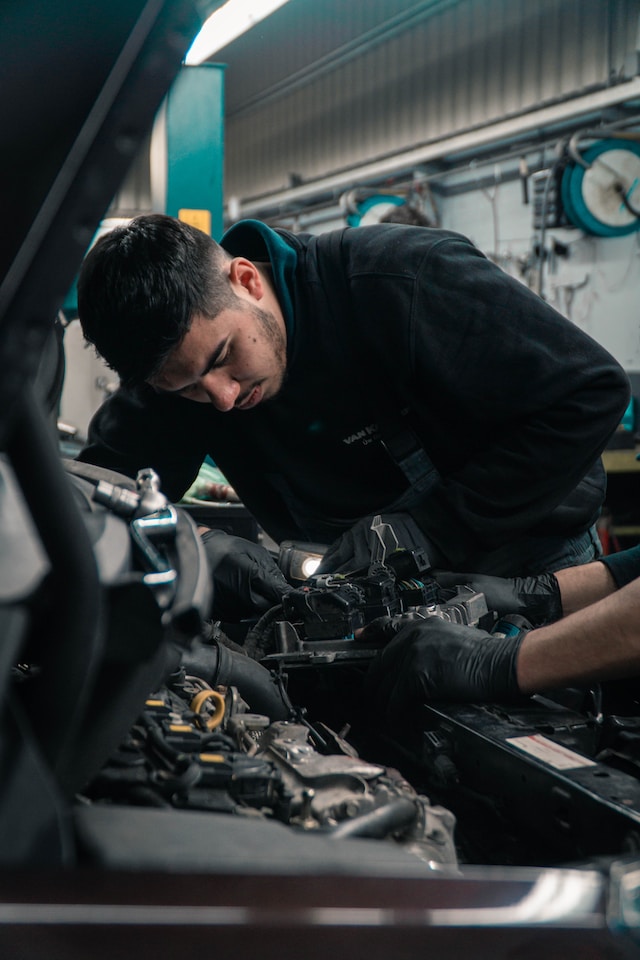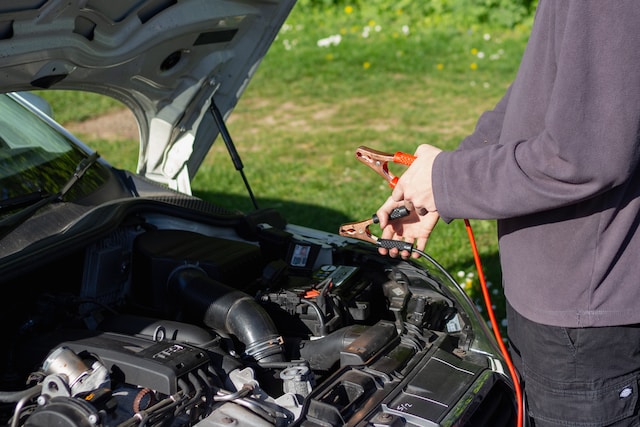
SuperPay helps automotive repair professionals like yourself get paid as quickly as possible. Choose our platform to power your payments & billing.
Auto repair is an essential service that keeps our vehicles running smoothly and safely on the roads. However, it is crucial to understand that safety and compliance go hand in hand in this industry. Ensuring the safety of both the technicians and the customers, as well as complying with the necessary regulations, should be a top priority for any auto repair shop.
In this blog post, we will delve into the importance of safety and compliance in the field of auto repair. We will explore the various safety measures that should be implemented, the compliance regulations that need to be followed, and the role of training, inspections, and audits in maintaining safety and compliance standards.
Safety measures in auto repair are crucial to protect the well-being of everyone involved. We will discuss why these measures are necessary and explore the essential safety equipment that should be present in every auto repair shop. Implementing these safety measures is not only a legal requirement but also a moral responsibility to ensure the health and well-being of technicians and customers alike.
Compliance regulations in auto repair are designed to ensure that all repairs are performed in accordance with industry standards and legal requirements. Understanding these regulations is essential for auto repair shop owners and technicians. We will examine the key compliance regulations that every shop should be aware of and discuss how to ensure compliance in daily operations.
Training plays a vital role in maintaining safety and compliance in the auto repair industry. We will highlight the importance of training for both technicians and shop owners, and discuss the key elements that should be included in a comprehensive training program. Implementing effective training methods not only enhances safety but also promotes a culture of compliance within the shop.
Inspections and audits are essential to verify that safety and compliance standards are being met. We will explore the role of inspections in ensuring safety and compliance, and provide tips on how to prepare for an inspection or audit. Additionally, we will discuss how to respond to the results of an inspection or audit, ensuring any necessary improvements are made promptly.
By understanding the importance of safety and compliance in auto repair, we can create a safer and more reliable environment for technicians and customers. Whether you are a shop owner, technician, or simply a concerned vehicle owner, this blog post will provide valuable insights and guidance on how to prioritize safety and compliance in the world of auto repair. Stay tuned for upcoming sections where we will dive deeper into each aspect of safety and compliance in auto repair.
Understanding the Importance of Safety and Compliance in Auto Repair
Safety and compliance are of utmost importance in the field of auto repair. Understanding why they are crucial is the first step in creating a culture that prioritizes the well-being of technicians and customers.
1.1 Why Safety Measures are Necessary - The potential risks and hazards in an auto repair shop environment - The impact of accidents and injuries on technicians and customers - Legal and financial consequences of failing to implement safety measures
1.2 The Essential Safety Equipment in Auto Repair - Personal protective equipment (PPE) for technicians - Fire safety equipment and protocols - Ventilation systems to prevent exposure to harmful substances - Safety devices and protocols for handling heavy machinery and tools
1.3 Implementing Safety Measures - Developing a safety plan and policies for the auto repair shop - Ensuring proper training and awareness among technicians - Regular maintenance and inspection of safety equipment - Establishing protocols for reporting and addressing safety concerns
Understanding the importance of safety measures in auto repair is crucial for creating a safe working environment. It not only protects the well-being of technicians but also contributes to customer satisfaction and trust. By implementing essential safety equipment and protocols, and fostering a culture that values safety, auto repair shops can minimize accidents and create a safer environment for everyone involved.
Safety Measures in Auto Repair
Safety measures in auto repair are essential to protect the well-being of technicians and customers. By implementing these measures, auto repair shops can minimize the risks and hazards associated with their operations. In this section, we will delve into why safety measures are necessary, explore the essential safety equipment, and discuss how to effectively implement these measures in an auto repair shop.
0.1 Why Safety Measures are Necessary - Identify the potential risks and hazards in an auto repair shop environment - Discuss the consequences of accidents and injuries on technicians and customers - Highlight the legal and financial implications of failing to implement safety measures
0.2 The Essential Safety Equipment in Auto Repair - Personal protective equipment (PPE) for technicians, including gloves, safety glasses, and ear protection - Fire safety equipment, such as fire extinguishers and fire blankets - Ventilation systems to prevent exposure to harmful chemicals and fumes - Safety devices and protocols for handling heavy machinery and tools, such as lifts and jacks
0.3 Implementing Safety Measures - Develop a comprehensive safety plan and policies for the auto repair shop - Provide proper training and awareness programs for technicians on safety protocols - Regularly inspect and maintain safety equipment to ensure functionality - Establish protocols for reporting and addressing safety concerns
Safety measures are necessary in auto repair shops to ensure the well-being of everyone involved. By identifying potential risks, implementing the essential safety equipment, and effectively implementing safety measures, auto repair shops can create a safer working environment. This not only protects technicians and customers but also promotes a culture of safety and compliance within the industry.
Compliance Regulations in Auto Repair
Compliance regulations in auto repair are crucial to ensure that repairs are performed in accordance with industry standards and legal requirements. By understanding and following these regulations, auto repair shops can maintain the highest level of quality and safety. In this section, we will explore the importance of compliance requirements, discuss key regulations in auto repair, and provide guidance on how to ensure compliance in daily operations.
1.1 Understanding Compliance Requirements - Importance of compliance in maintaining industry standards and customer trust - Types of compliance requirements in auto repair, including local, state, and federal regulations - The role of regulatory agencies and industry associations in setting compliance standards
1.2 Key Compliance Regulations in Auto Repair - Environmental regulations related to waste disposal and hazardous materials - Occupational safety and health regulations to protect technicians and customers - Consumer protection regulations, including pricing transparency and warranty requirements - Licensing and certification requirements for auto repair shops and technicians
1.3 How to Ensure Compliance - Conducting regular audits and inspections to identify areas of non-compliance - Developing and implementing policies and procedures to address compliance requirements - Keeping up-to-date with changes in regulations and industry best practices - Training technicians and staff on compliance standards and protocols
Complying with regulations in auto repair is not only a legal obligation but also a commitment to providing quality services and protecting the interests of technicians and customers. By understanding compliance requirements, adhering to key regulations, and implementing effective compliance strategies, auto repair shops can maintain their reputation, avoid legal issues, and contribute to the overall integrity of the industry.

Training for Safety and Compliance in Auto Repair
Training plays a crucial role in ensuring safety and compliance in the auto repair industry. By providing comprehensive training programs, auto repair shops can equip their technicians with the necessary knowledge and skills to perform their tasks safely and in compliance with regulations. In this section, we will explore the importance of training for safety and compliance, discuss key elements of training programs, and provide guidance on how to implement effective training in an auto repair shop.
2.1 Importance of Training for Safety and Compliance - Understand the role of training in preventing accidents, injuries, and non-compliance - Highlight the benefits of a well-trained workforce, including improved efficiency and customer satisfaction - Discuss the legal obligations and industry standards related to training in auto repair
2.2 Key Elements of Training - Identify the essential topics to cover in safety and compliance training, including hazard identification, proper tool usage, and waste disposal protocols - Discuss the importance of ongoing training and refresher courses to stay updated with new regulations and technologies - Explore different training methods and resources, such as in-person workshops, online courses, and industry certifications
2.3 How to Implement Effective Training - Develop a training plan that outlines the objectives, content, and delivery methods - Assign dedicated trainers or utilize external training resources to ensure quality instruction - Incorporate hands-on practical exercises and real-life scenarios to reinforce learning - Establish a system for tracking and documenting training completion for each technician
By prioritizing training for safety and compliance, auto repair shops can create a knowledgeable and skilled workforce that is equipped to handle tasks with utmost care and adherence to regulations. Implementing comprehensive training programs, covering key topics and utilizing effective training methods, ensures that technicians are aware of safety protocols, compliance requirements, and industry best practices. This investment in training not only enhances safety and compliance but also contributes to the overall success and reputation of the auto repair shop.
Inspections and Audits for Safety and Compliance
Inspections and audits are essential processes in maintaining safety and compliance standards in the auto repair industry. They provide an objective evaluation of the shop's operations, identifying areas of improvement and ensuring adherence to regulations. In this section, we will explore the role of inspections and audits, discuss how to prepare for them, and provide guidance on responding to inspection and audit results.
3.1 Role of Inspections in Ensuring Safety and Compliance - Understand the purpose and benefits of inspections in identifying safety and compliance issues - Discuss the different types of inspections, including routine inspections, surprise inspections, and third-party audits - Highlight the role of regulatory agencies and industry associations in conducting inspections
3.2 How to Prepare for an Inspection or Audit - Establish a culture of continuous improvement and compliance within the shop - Conduct regular self-audits to identify and address potential issues before an official inspection or audit - Review and update policies, procedures, and documentation to ensure compliance - Train technicians and staff on what to expect during an inspection or audit and their roles in the process
3.3 Responding to Inspection and Audit Results - Understand the importance of promptly addressing any findings or violations identified during an inspection or audit - Develop an action plan to rectify non-compliance issues and implement necessary improvements - Communicate with regulatory agencies, if required, to provide corrective actions and demonstrate commitment to compliance - Establish a system for ongoing monitoring and follow-up to ensure sustained compliance
Inspections and audits are critical tools to verify that safety and compliance standards are being met in the auto repair shop. By understanding the role of inspections, preparing adequately for them, and responding effectively to their results, auto repair shops can proactively address any non-compliance issues and continuously improve their operations. These processes not only ensure a safe and compliant environment but also contribute to the reputation and success of the shop.
Final Assessment
Ensuring safety and compliance is paramount in the auto repair industry. This blog explores essential practices to maintain a safe and compliant repair shop, promoting both customer satisfaction and adherence to industry standards.


